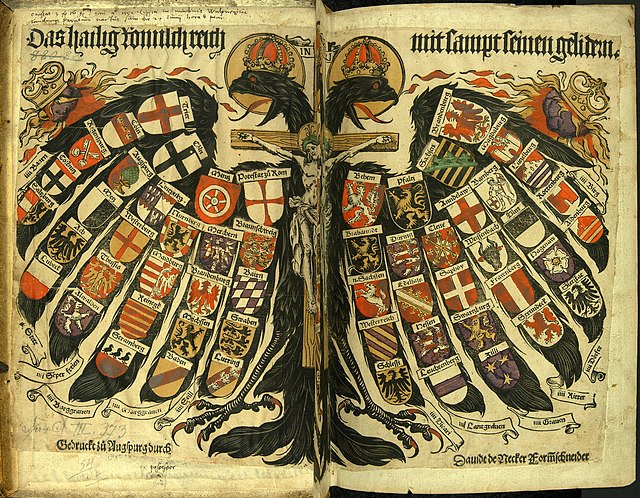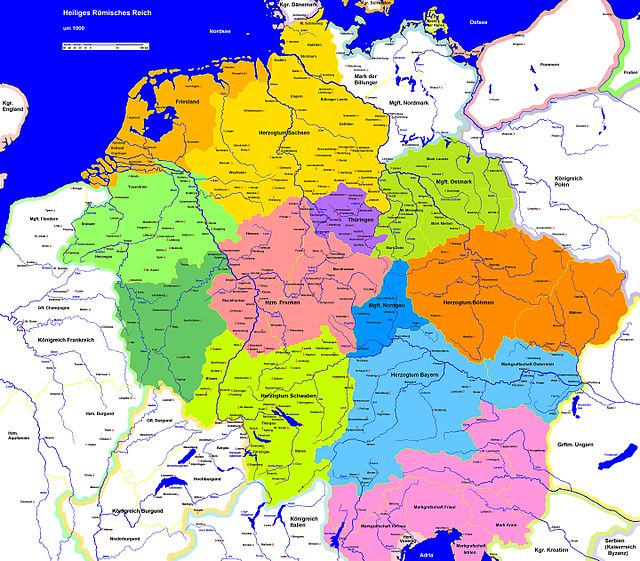Imperial Reform is the name given to repeated attempts in the 15th and 16th centuries to adapt the structure and the constitutional order of the Holy Roman Empire to the requirements of the early modern state and to give it a unified government under either the Imperial Estates or the emperor's supremacy.
Maximilian I, Holy Roman Emperor. Painting by Albrecht Dürer
Berthold von Henneberg (died 1504), epitaph.
Maximilian I paying attention to an execution instead of watching the betrothal of his son Philip the Handsome and Joanna of Castile. The top right corner shows Cain and Abel. Satire against Maximilian's legal reform, associated with imperial tyranny. Created on behalf of the councilors of Augsburg. Plate 89 of Von der Arztney bayder Glück by the Petrarcameister [de].
Personification of the Reich as Germania by Jörg Kölderer [de], 1512. The "German woman", wearing her hair loose and a crown, sitting on the Imperial throne, corresponds both to the self-image of Maximilian I as King of Germany and the formula Holy Roman Empire of the German Nation (omitting other nations). While usually depicted during the Middle Age as subordinate to both imperial power and Italia or Gallia, she now takes central stage in Maximilian's
The Holy Roman Empire, also known as the Holy Roman Empire of the German Nation after 1512, was a polity in Central and Western Europe, usually headed by the Holy Roman Emperor. It developed in the Early Middle Ages and lasted for almost 1,000 years until its dissolution in 1806 during the Napoleonic Wars.
The double-headed eagle with coats of arms of individual states, the symbol of the Holy Roman Empire (painting from 1510)
The Holy Roman Empire during the Ottonian dynasty
Henry begging Matilda of Tuscany and Hugh of Cluny in Canossa Castle (miniature in an illuminated manuscript kept in the Vatican Library, 1115)
Frederick Barbarossa, Holy Roman Emperor




![Personification of the Reich as Germania by Jörg Kölderer [de], 1512. The "German woman", wearing her hair loose and a crown, sitting on the Imperial](https://upload.wikimedia.org/wikipedia/commons/thumb/5/56/Germania_by_Jorg_Kolderer.jpg/640px-Germania_by_Jorg_Kolderer.jpg)



